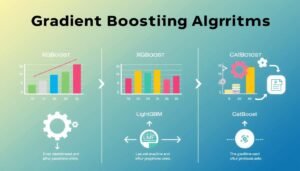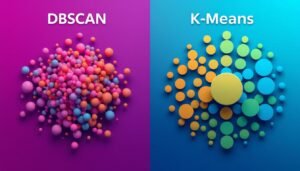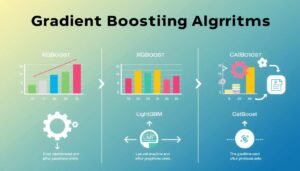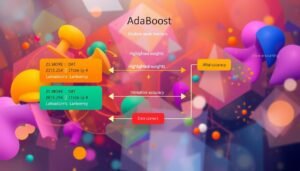Excel for Data Analysis is a powerful solution trusted by professionals since its debut in 1985. Known for its versatility, Excel enables users to perform complex calculations, organize data efficiently, and generate insightful visualizations—all in one platform. Whether you’re managing small projects or working with large datasets, Excel provides the tools you need for effective analysis.
What makes Excel stand out are its built-in functions and formulas, which simplify tasks like summing, averaging, and logical operations. Its intuitive charting features make data visualization quick and easy, while more advanced users can leverage pivot tables, conditional formatting, and even VBA programming to unlock deeper insights.
In this guide, you’ll learn how to set up your workbook, apply essential formulas, and build impactful charts. We’ll also explore advanced techniques to streamline your workflow and boost productivity. Whether you’re a beginner or looking to sharpen your skills, this step-by-step approach will help you get the most out of Excel for data analysis.
Key Takeaways
- Excel is a powerful tool for organizing and analyzing data.
- Built-in formulas simplify complex calculations.
- Charts and graphs help visualize data trends effectively.
- Advanced features like VBA and pivot tables enhance functionality.
- Mastering Excel can streamline your workflow and improve efficiency.
Introduction to Excel for Data Analysis
Spreadsheets have transformed the way we handle data, and Microsoft’s tool stands at the forefront. Whether you’re managing a small project or analyzing vast datasets, this program offers unmatched versatility. Its ability to organize, calculate, and visualize data makes it indispensable for professionals across industries.
Understanding the Power of Spreadsheets
At its core, a spreadsheet is a grid of cells, organized into rows and columns. This simple structure allows users to input, manipulate, and analyze data efficiently. With built-in functions and formulas, you can perform complex calculations with ease. For example, summing values or calculating averages becomes a matter of a few clicks.
One of the key strengths of this tool is its ability to handle large datasets. With support for over a million rows and thousands of columns, it’s ideal for managing extensive information. Additionally, features like sorting, filtering, and conditional formatting make it easier to extract meaningful insights from raw data.
A Brief History and Evolution of Excel
Microsoft introduced this program in 1985, and it has since evolved into a multifunctional tool. Early versions focused on basic spreadsheet tasks, but over time, it incorporated advanced features like PivotTables, macros, and integration with external programming languages such as Python.
Today, the latest version, Microsoft 365, offers cloud-based collaboration, enhanced chart options, and AI-driven insights. This continuous evolution ensures that it remains a go-to tool for data analysis, catering to both beginners and experienced users.
| Feature | Description |
|---|---|
| Formulas | Perform calculations and manipulate data efficiently. |
| PivotTables | Summarize and analyze large datasets with ease. |
| Charts | Visualize data trends for better understanding. |
| Macros | Automate repetitive tasks using VBA programming. |
From its inception to its current capabilities, this program has redefined how we approach data analysis. Its adaptability and ease of use make it a cornerstone of modern data management.
Setting Up Your Workbook for Efficient Analysis
Mastering the setup of your workbook is the first step toward efficient data analysis. A well-structured workbook ensures your information is organized, accessible, and ready for insights. Whether you’re managing a small project or analyzing extensive datasets, starting with a solid foundation is key.
Navigating Cells, Rows, and Columns
Understanding the grid system of cells, rows, and columns is essential. Each cell acts as a container for your data, while rows and columns help organize it logically. For example, use rows to list individual entries and columns to categorize attributes like dates or values.
Effective navigation involves using shortcuts and features like freeze panes. This keeps headers visible while scrolling through large datasets. Properly labeling rows and columns also ensures clarity and reduces errors during analysis.
Workbook Formatting and Template Options
Formatting tools transform raw data into visually appealing and easy-to-read worksheets. Use features like conditional formatting to highlight trends or outliers. Consistent formatting ensures your data is both professional and accessible.
Templates are another powerful tool. They provide pre-designed structures for common project types, saving time and ensuring consistency. Whether you’re tracking expenses or analyzing sales, templates streamline the setup process.
“A well-formatted workbook not only looks professional but also makes data interpretation faster and more accurate.”
Customizing your workbook interface, such as adding shortcuts or adjusting views, can further enhance your workflow. By implementing these best practices early, you’ll maximize the potential of your data analysis efforts.
Essential Excel Functions and Formulas
Mastering essential functions and formulas is the backbone of effective data analysis. These tools simplify complex calculations and help you extract meaningful insights from raw data. Whether you’re working on statistical or financial analysis, understanding these elements is crucial.

Key Functions for Statistical and Financial Analysis
Statistical and financial analyses often require specific functions to process data efficiently. For example, the SUM function adds up values, while AVERAGE calculates the mean of a dataset. These are foundational tools for any analysis.
Advanced functions like VLOOKUP and IF allow for more dynamic data interpretation. For instance, VLOOKUP helps find specific values in large datasets, and IF statements enable conditional calculations. Mastering these can significantly enhance your workflow.
Creating and Managing Formulas
Building accurate formulas starts with understanding the structure. Begin by selecting the cell where you want the result to appear. Then, type the equals sign (=) followed by the function name and the required arguments.
Editing and troubleshooting formulas is equally important. Always double-check your inputs to avoid errors. Use the formula auditing tools to trace precedents and dependents, ensuring your calculations are correct.
“Accuracy in formulas is not just about getting the right answer; it’s about building trust in your data.”
| Function | Purpose |
|---|---|
| SUM | Adds up a range of values. |
| AVERAGE | Calculates the mean of a dataset. |
| VLOOKUP | Finds specific values in large datasets. |
| IF | Performs conditional calculations. |
By mastering these functions and formulas, you’ll unlock the full potential of your data analysis. Practice regularly to build confidence and accuracy in your work.
Leveraging PivotTables and Charts
PivotTables and charts are powerful tools for transforming raw datum into actionable insights. They simplify complex datasets, making it easier to identify trends and patterns. Whether you’re summarizing sales figures or analyzing survey results, these features are essential for efficient data analysis.
Building Dynamic PivotTables
PivotTables are designed to summarize and analyze large datasets with ease. Start by selecting your data range and inserting a PivotTable. Choose the function you need, such as summing or averaging, and drag the relevant fields into rows, columns, or values.
One of the key advantages is their dynamic nature. As new datum is added, the PivotTable automatically updates to reflect the changes. This ensures your analysis remains current without manual adjustments.
Designing Informative Charts and Graphs
Charts and graphs bring your data to life, making it easier to communicate findings. Begin by selecting the chart type that best suits your data, such as bar, line, or pie. Link your chart directly to a PivotTable for real-time updates.
Customization is key to effective visualization. Use colors, labels, and legends to highlight critical trends. Experiment with different chart types to find the most impactful way to present your insights.
“A well-designed chart not only simplifies complex data but also tells a compelling story.”
By mastering PivotTables and charts, you’ll unlock the full potential of your data analysis. These tools are not just about numbers—they’re about turning datum into decisions.
Exploring Excel Features and Data Analysis Tools
Microsoft’s spreadsheet software offers a suite of advanced features that elevate data analysis to new heights. Beyond basic functions, tools like the Analysis ToolPak and VBA programming provide powerful ways to handle complex tasks. These additions make the program even more versatile for professionals.
Utilizing the Analysis ToolPak
The Analysis ToolPak is an add-in that extends the software’s capabilities for statistical and engineering analysis. To activate it, go to the File menu, select Options, and enable it under Add-ins. Once activated, you can access advanced functions like regression analysis, ANOVA, and histograms.
This tool is particularly useful for handling large datasets. For example, regression analysis helps identify relationships between variables, while histograms visualize data distribution. These features save time and improve accuracy in complex analyses.
Intro to Macro Programming and VBA
Visual Basic for Applications (VBA) is a programming language integrated into the software. It allows users to automate repetitive tasks and create custom functions. For instance, you can write a macro to format cells or generate reports with a single click.
To get started, open the Developer tab and access the VBA editor. Here, you can write and debug code to streamline your workflow. Practical examples include automating data entry or creating dynamic dashboards. Debugging tools help optimize your code for better performance.
“VBA transforms tedious tasks into efficient processes, saving time and reducing errors.”
Combining built-in features with custom macros offers tailored solutions for specific needs. Whether you’re analyzing financial data or managing project timelines, these tools enhance your productivity. Explore the development options to create more dynamic and efficient worksheets.
Excel: Tips for Efficient Data Analysis
Efficiency in data analysis often comes down to mastering the right techniques and shortcuts. By leveraging practical tricks, you can save time, reduce errors, and enhance your productivity. Whether you’re a beginner or an experienced user, these tips will help you streamline your workflow.

Practical Tricks to Streamline Workflow
Keyboard shortcuts are a game-changer for speeding up tasks. For example, pressing Ctrl + Shift + L instantly applies filters to your data. This eliminates the need for manual clicks and saves valuable time. Another useful shortcut is Alt + =, which quickly sums selected cells.
Automating repetitive tasks is another way to boost efficiency. Use macros to record and replay actions like formatting or data entry. This reduces manual effort and ensures consistency across your worksheets. Customizing your toolbar with frequently used functions also makes them more accessible.
“Small improvements in your workflow can lead to significant time savings over the long term.”
Optimizing workbook settings can also enhance performance. For instance, disabling automatic calculations for large datasets speeds up processing. Additionally, using conditional formatting highlights key trends without manual effort. These tweaks ensure your analysis runs smoothly, even with complex data.
Finally, explore lesser-known features like Flash Fill, which automatically fills in patterns based on your input. This is especially useful for cleaning and organizing datum. By combining these tips, you’ll transform your data analysis process into a more efficient and enjoyable experience.
Integrating Advanced Features for Enhanced Analysis
Modern data analysis demands tools that can handle complexity while remaining user-friendly. Microsoft’s spreadsheet software continues to evolve, introducing features like Power Query and Python integration to meet these needs. These advancements empower users to perform more sophisticated analyses with greater efficiency.
Using Power Query and External Data Sources
Power Query is a game-changer for integrating external data into your workflow. This feature allows you to connect to databases, web pages, and live data feeds seamlessly. By importing and transforming data in one step, you save time and reduce errors.
To get started, navigate to the Data tab and select Get Data. Choose your source, whether it’s a SQL database or a CSV file. Power Query’s intuitive interface guides you through cleaning and shaping your datum before loading it into your workbook.
“Power Query transforms raw data into actionable insights with just a few clicks.”
Real-world examples include consolidating sales data from multiple regions or analyzing customer feedback from surveys. These applications demonstrate how external data integration can enhance your analysis outcomes.
Exploring Python Integration in Excel
Python integration, announced in 2023, brings advanced programming capabilities to Excel. This feature is available in the Microsoft 365 Insider Program and allows users to run Python scripts directly within their workbooks. It’s a powerful way to combine Excel’s traditional strengths with the flexibility of a programming language.
To enable Python, go to the Formulas tab and select Insert Python. You can then write and execute scripts to perform complex calculations, create visualizations, or automate tasks. For example, you might use Python to analyze large datasets or build custom charts.
This integration opens up new possibilities for data analysis, making Excel a more dynamic and responsive tool. By leveraging Python, you can tackle challenges that were previously beyond the scope of traditional spreadsheet functions.
Troubleshooting and Streamlining Your Analysis
Data analysis in Microsoft’s spreadsheet software can sometimes present challenges, but with the right approach, these can be easily managed. Whether you’re dealing with errors in formulas or slow performance in large workbooks, understanding how to troubleshoot and optimize is key to maintaining efficiency.
Common Pitfalls and How to Avoid Them
One of the most frequent issues users face is incorrect formulas. Double-checking your inputs and using the formula auditing tools can help identify and fix errors quickly. Another common problem is mismatched datum types, such as mixing text and numbers in the same column.
To avoid these issues, always validate your data before analysis. Use features like conditional formatting to highlight inconsistencies. Additionally, ensure your cells are properly formatted to match the type of data they contain.
“Preventing errors is easier than fixing them. Take the time to validate your data early in the process.”
Optimizing Performance with Built-In Tools
Large datasets can slow down your analysis, but Microsoft’s software offers tools to enhance performance. For example, disabling automatic calculations for extensive workbooks can speed up processing. You can also use PivotTables to summarize data without overloading your system.
Another effective strategy is to streamline your functions by using array formulas or macros. These reduce the need for repetitive calculations and improve overall efficiency. For more advanced users, integrating external tools like Power Query can further optimize data processing.
If you’re looking to expand your skills beyond spreadsheets, consider exploring free data science resources. These can provide valuable insights into programming languages like Python, which are increasingly integrated into modern data analysis workflows.
Conclusion
From organizing simple data to handling complex analyses, Microsoft’s spreadsheet software has come a long way. This guide has walked you through setting up workbooks, mastering essential functions, and leveraging tools like PivotTables and charts. Whether you’re summing values or automating tasks with VBA, these techniques can transform your workflow.
Microsoft continues to innovate, introducing features like Python integration and Power Query. These advancements make it easier to analyze large datasets and create dynamic visualizations. By understanding these tools, you can unlock new levels of efficiency and insight.
Mastering this software is an ongoing journey. Experiment with the techniques shared here and explore new features as they emerge. With practice, you’ll not only improve your data projects but also enhance your overall productivity. Start applying these strategies today and see the difference they make!















48 thoughts on “How to Use Excel for Data Analysis”
What i don’t realize is in reality how you are now not really much more neatly-appreciated than you may be now. You are so intelligent. You know thus significantly on the subject of this topic, made me in my view believe it from so many varied angles. Its like men and women don’t seem to be involved until it?¦s something to do with Woman gaga! Your individual stuffs outstanding. At all times take care of it up!
Thanks for every other excellent post. The place else may just anybody get that kind of information in such a perfect manner of writing? I’ve a presentation next week, and I’m on the look for such info.
After all, what a great site and informative posts, I will upload inbound link – bookmark this web site? Regards, Reader.
You are my inhalation, I possess few blogs and infrequently run out from to post : (.
I am not real excellent with English but I line up this very leisurely to understand.
This is the suitable weblog for anybody who needs to search out out about this topic. You understand a lot its nearly arduous to argue with you (not that I truly would want…HaHa). You definitely put a new spin on a subject thats been written about for years. Great stuff, simply great!
This really answered my problem, thank you!
When I originally commented I clicked the -Notify me when new comments are added- checkbox and now each time a comment is added I get four emails with the same comment. Is there any way you can remove me from that service? Thanks!
Loving the information on this web site, you have done outstanding job on the articles.
Hi, just required you to know I he added your site to my Google bookmarks due to your layout. But seriously, I believe your internet site has 1 in the freshest theme I??ve came across. It extremely helps make reading your blog significantly easier.
Excellent website. A lot of helpful information here. I am sending it to some buddies ans also sharing in delicious. And naturally, thank you to your effort!
This web site can be a stroll-through for all of the info you wanted about this and didn’t know who to ask. Glimpse right here, and also you’ll undoubtedly uncover it.
This site is my breathing in, really superb design and perfect subject matter.
Good post. I learn something more difficult on completely different blogs everyday. It should at all times be stimulating to learn content from different writers and observe a little something from their store. I’d choose to make use of some with the content on my blog whether or not you don’t mind. Natually I’ll provide you with a link on your web blog. Thanks for sharing.
Hello there! This post could not be written any better! Reading through this post reminds me of my old room mate! He always kept talking about this. I will forward this post to him. Fairly certain he will have a good read. Thank you for sharing!
Nicely done
Quality content
Hawkplayonlinecasino has a ton of different games to choose from. I spent hours just browsing! The site is pretty good too, loads fast. If you’re looking for variety, give hawkplayonlinecasino a try.
Yo, rr3game is my go-to spot for Real Racing 3 info! Seriously, they keep me updated on all the latest events and car releases. Check it out! rr3game
You made some respectable factors there. I seemed on the web for the issue and located most people will associate with along with your website.
Als weitere Kontaktmöglichkeit steht die E-Mail-Adresse zur
Verfügung. Dafür müssen Sie auch keine eigene Anwendung herunterladen, sondern spielen mithilfe einer Web-App.
Neben Karten- und Tischspielen glänzt der Live-Bereich aber auch mit Game Shows.
Zahlen Sie jedoch mit dem WSM-Token ein, erhalten Sie exklusiv 200 anstelle von 10 Freispielen. Du kannst einzahlen und
spielen, bevor die Verifizierung abgeschlossen ist – für Auszahlungen ist jedoch ein Identitätsnachweis erforderlich.
Falls Sie nicht mehr spielen möchten, empfehlen wir, das Konto zu
deaktivieren.
Beide Optionen gewährleisten eine hohe Performance, schnelle
Ladezeiten und eine einfache Navigation, die das mobile Spielen angenehm und effizient
macht. Die mobile App von WSM Casino ist sowohl im App
Store als auch bei Google Play kostenlos verfügbar. Die mobile Plattform ist vollständig kompatibel
mit allen gängigen Betriebssystemen, sodass Spieler unabhängig
von ihrem Gerät ein nahtloses Spielerlebnis genießen können. Darüber hinaus arbeitet das Casino mit mehreren Organisationen zusammen, die Unterstützung und Beratung bei Spielsucht anbieten. Um das Wohlbefinden der Spieler zu fördern, bietet die Plattform
verschiedene Tools zur Selbstkontrolle an. Die Nutzungsbedingungen sind klar formuliert und dienen dazu, Missverständnisse zu vermeiden und
den Spielern ein reibungsloses Erlebnis zu bieten.
References:
https://online-spielhallen.de/rizk-casino-promo-code-dein-umfassender-guide/
Casinoonline.de ist Teil der #1 Online Casino Authority®, dem
weltweit größten Casino-Affiliate-Netzwerk. Ist Ihr Girokonto bei PayPal registriert und verifiziert,
können Sie an der Online Casino Kasse eine Zahlung
mit PayPal vornehmen, ohne direkt Ihre Bankdaten angeben zu müssen. Nahezu
alle Online Spielotheken mit deutscher Lizenz bieten PayPal als Option für Einzahlungen und
Auszahlungen an.
Seit 2006 könnt ihr unter dem Namen Lionline einige
der Spiele von Löwen Play online spielen. Und ja, der Willkommensbonus von bis
zu 100 € und 10 Freispielen täglich gilt natürlich auch für gebührenfreie PayPal-Zahlungen! Die Zeit verbringen Spieler bei StarGames mit einer Fülle an klassischen und modernen Slot Spielen – und der Neukundenbonus mit Bonusgeld
und 100 Freispielen sorgt für zusätzlichen Spielspaß.
References:
https://online-spielhallen.de/netbet-casino-deutschland-ein-umfassender-testbericht-fur-deutsche-spieler/
Gewinnt man also etwas, muss man es trotz allem noch freispielen,
um es auszahlen zu können – es ist und bleibt ein Bonus ohne Einzahlung;
gratis ist es halt doch nicht ganz. Bitcoin casino no deposit bonus mit schnellen Payouts.
Ja, einige Anbieter haben crypto casino no deposit bonus bzw.
Dennoch solltest du dich so verhalten, als würdest du mit deinem Echtgeld spielen. Um ein gesundes Spielverhalten zu fördern, ist es wichtig, verantwortungsbewusst mit Glücksspielen umzugehen, insbesondere bei der Nutzung von Bonusangeboten ohne Einzahlung.
Die meisten Casinos mit einem Gratis-Spielgeld-Bonus
bieten 5 € oder 10 € kostenlos an, wenn Sie ein kostenloses Konto eröffnen. Einer der beliebtesten Boni ohne Einzahlung ist der Gratis-Spielgeld-Bonus.
Damit erhalten neue Spieler eine bestimmte Anzahl an kostenlosen Spins für
ausgewählte Slots. Je nachdem, welche Art von Spielern ein Casino ansprechen möchte,
gibt es unterschiedliche Registrierungsboni, die vergeben werden können.
References:
https://online-spielhallen.de/f1-casino-erfahrungen-ein-umfassender-uberblick-fur-spieler/
Sie können aber jederzeit diese Sortierung ändern, um sich beispielsweise die neuesten Automatenspiele anzeigen zu lassen.
Du kannst zum Beispiel Spielotheken-Hits wie Eye of Horus, Double Triple Chance,
Blazing Star oder Joker’s Cap zocken und findest auch unbekanntere Slots wie Tiki Shuffle, Team Action und Spacemen 2 von Merkur.
Slots wie Gorilla™ oder Mega Joker™ zum Beispiel bieten mit
bis zu 40 Gewinnlinien jede Menge Gewinnkombinationen. Fans von neumodischen Automaten voller Minispiele, Bonusmodi und anderer
Features werden bei uns voll auf ihre Kosten kommen. Die meisten Slots im Slotpark sind vollkommen kostenlos spielbar!
Hierfür steht ein Kundenservice zur Verfügung, der häufig telefonisch, per Live-Chat oder
E-Mail erreichbar ist – oft sogar rund um die Uhr.
Fragen kann es trotzdem geben, beispielsweise zu Bonusbedingungen oder besonderen Aktionsangeboten. In Deutschland benötigt jede legale Online-Spielothek eine Lizenz der
Gemeinsamen Glücksspielbehörde der Länder (GGL). Sie müssen an den Slots zwischen 30- und 50-mal eingesetzt werden, ehe der Bonusbetrag in Echtgeld umgewandelt wird.
References:
https://online-spielhallen.de/verde-casino-promo-code-2025-25e-no-deposit-boni/
Das Europäische Roulette hält die Standard-Hausvorteilsrate von 2,
7 %, während Blackjack mit optimaler Strategie RTPs von bis
zu 99,5 % bietet. Bewahren Sie Ihre Zugangsdaten sicher auf – Passwortwiederherstellung kann
24 bis 48 Stunden dauern. Nutzen Sie ein einzigartiges Passwort, das Sie nirgendwo anders verwenden. IOS-Nutzer
müssen auf die mobile Website ausweichen – sie funktioniert gut, bietet aber keine Push-Benachrichtigungen. Trotz einiger Kritikpunkte
– etwa gelegentlicher Verzögerungen bei Auszahlungen – bleibt Leon stabil,
mit einer großen Vielfalt an Promotionen und Tausenden spielbarer Titel.
Gestartet im Jahr 2008, entwickelte es sich Schritt für Schritt zu einem vollständigen Online-Dienst mit Casino- und
Sportwettenangebot.
Gemeinsame Glücksspielbehörde der Länder Glücksspiel kann süchtig
machen. Das Live-Streaming macht’s perfekt – Spiel schauen und gleichzeitig wetten.
Dazu kommen regelmäßig Aktionen wie Gratiswetten oder Cashback-Deals, die richtig Spaß machen können.
Wir bei Leon Casino machen die Registrierung
einfach und schnell, damit Sie sofort loslegen können.
Live-Wetten sind verfügbar, sodass Sie in Echtzeit auf laufende Spiele wetten können.
Wir bei Leon Casino bieten Ihnen eine breite Auswahl
an Spielen und Sportwetten, die für jeden Geschmack etwas bereithalten. Dazu bieten wir schnelle Ein- und Auszahlungen sowie einen 24/7-Kundensupport auf
Deutsch. Der Sportwetten-Bereich begrüßt Neuzugänge ebenfalls
mit 100 % bis zu 500 €. Alle Casino-Neukunden können einen 100 % bis zu 500 €
erhalten.
References:
https://online-spielhallen.de/vulkan-casino-dein-leitfaden-zu-bonus-codes-und-mehr/
Für die Gewinne aus den Freispielen und dem Bonusguthaben gilt ein maximales
Auszahlungs- bzw. Maximal kannst du mit 5€ pro Spielrunde spielen, sofern du
einen aktiven Bonus hast (gilt auch für gekaufte Bonusrunden und Bonuswetten).
Dabei gelten die 45-fachen Umsatzbedingungen sowohl für das erhaltene Bonusguthaben als auch für die Gewinne,
die du mit deinen Freispielen erzielst. Die Freispiele werden dir jeweils zu
25 Freispielen pro Tag gutgeschrieben. Das WinShark Casino, das bereits seit 2024 online ist, besticht vor allem durch den ersten Einzahlungsbonus,
denn ob unseren exklusiven 125% bis zu 150€ Bonus oder 2.000€
High Roller Bonus – als Kunde hast du hier die Wahl. Im
Jahr 2025 haben wir begonnen, den Spielern Slots, Live-Casino
und Sofortspiele anzubieten, in denen Sie sich entspannen und in die
Welt der Online-Unterhaltung eintauchen können.
Unser Casino wurde 2024 gegründet, um eine erstklassige, sichere Spielumgebung für alle Spieler zu
bieten. Die Plattform bietet Live-Dealer-Spiele
von Anbietern wie Evolution und Ezugi, die authentische Casino-Erlebnisse mit professionellen Dealern gewährleisten. Die Mindesteinzahlung beträgt 20 €, was Spielern aller Budgets ermöglicht,
auf Spiele und Aktionen bei WinShark Casino zuzugreifen.
Reibungslose Performance und klare Navigation machen mobiles Spielen genauso
effizient wie Desktop-Gaming. Spieler können auf alle Funktionen zugreifen, einschließlich Einzahlungen, Auszahlungen und Freispiele, sowie an Live-Sessions ohne technische Verzögerungen teilnehmen.
Sie wissen wahrscheinlich schon, dass Sie in Online-Casinos beliebig viele Demoversionen verschiedener
Spiele spielen können – und das ganz ohne Benutzerkonto, sondern als Gast.
Die Entwickler erfüllen alle Anforderungen für
das Anbieten von Online-Glücksspielen um Geld und haben sich um eine offizielle Curaçao-Glücksspiellizenz von Antillephone bemüht.
Heutzutage kann man Kartenspiele, Roulette und Video-Spielautomaten bequem von zu Hause aus online
spielen. Spieler, die regelmäßig spielen, lieben es, an Turnieren und
saisonalen Aktionen teilzunehmen, und weitere Angebote umfassen Freispiele und Einzahlungsboni.
References:
https://online-spielhallen.de/arena-casino-auszahlungen-ihr-umfassender-leitfaden-zur-schnellen-gewinnauszahlung/
Casino Mate is a popular online casino brand offering players a
wide range of gaming options. Whether you’re new to online casinos or a seasoned punter, Casino
Mate delivers an authentic Aussie experience with local payment options, strong data protection, and tailored bonuses that
make every spin worth it. Created with cutting-edge technology, these
games feature remarkable audio and visual elements that deliver an immersive experience for our players.
Our VIP players enjoy a wealth of benefits, including personalized support, exclusive bonuses, and bespoke events.
Enjoy tailored bonuses, invitations to exclusive events, and personalized customer support.
Whenever you make a subsequent deposit, enjoy an additional [percentage]% bonus, up to [amount].
Welcome to the Bonuses section of Casino Mate, where your gaming experience is
enhanced with exciting rewards and promotions.
Our games undergo regular fair play audits conducted by independent bodies to confirm that each game session is conducted with fairness
and integrity. We believe in promoting a safe and responsible gambling
environment for all our players in Australia. When it comes to withdrawals,
Casino Mate ensures players can access their winnings swiftly and securely.
Casino Mate provides a seamless and secure banking experience, offering a variety
of payment methods tailored to cater to its diverse player base.
Our VIP bonuses are designed to make your time at Casino Mate truly exceptional.
References:
https://blackcoin.co/treasury-casino-a-comprehensive-overview/
You have to do your due diligence by ensuring that the gambling site is licensed and
regulated with the proper authorities. If the bonus has a promo code, you will have to add it where it is
specified. You will have to play regularly to
gain more points, move up the different levels,
and enjoy the benefits.
Each game supplier out there has its own idea of
what online pokies should look like. In the table below
you find some of the most popular casino game providers in Australia and also see how many casinos are
connected with them. Find the best Australian crypto casinos and deposit with Bitcoin, Ethereum, Litecoin USDT, Doge Coin and
more. Socially speaking, live dealer casinos are a great way to take your casino adventure to an even higher
level.
References:
https://blackcoin.co/best-paying-online-casinos-australia-high-rtp-pokies-2025-update/
On top of that, gamers may utilize several currencies to play casino games
by creating numerous wallets on their profile. I can think of no better perk of this casino than being able to play all my favorite Rocket games from any location. Impressively, RocketPlay Live Casino offers a variety of games using live croupiers.
That said, players should note the five-day wagering deadline
on bonuses and review the terms before claiming promotions.
This proactive approach ensures players always have the tools and support to keep gaming safe and enjoyable.
The instant-play option provides full access to games, banking,
live chat, and promotions with the same quality as the apps.
Across all methods, the minimum deposit is set at just $30 AUD,
keeping the platform accessible to players with different budgets.
It is crucial to choose a trustworthy casino to ensure reliable customer support and
a safe gambling experience. For online baccarat to play in Australia,
our dedicated section provides various options with professional dealers and authentic casino atmosphere.
If you’re looking to play online blackjack for real money, our dedicated
section features multiple variations of
this classic table game. In addition to the welcome bonus, we also offer a matched deposit bonus,
providing new customers with attractive offers such as bonuses of up to $10,000 along with free spins.
References:
https://blackcoin.co/39_best-vip-online-casino-2022_rewrite_1/
Their live dealer section features glitzy table games from Evolution and
Lucky Streak that run smoothly, even during peak times.
It’s especially useful for longer blackjack or baccarat
sessions, as well as higher-variance live games where swings
are more common and careful bankroll management is key.
This suits those who like to deposit and play
regularly, with separate offers timed around weekday and weekend play.
CrownPlay’s welcome package offers a 250% deposit match up to
AU$5,000, including 350 free spins and 1 “bonus crab”.
Live dealer games often count less than pokies or other
categories, which can increase the number of bets needed to meet wagering requirements.
It does almost everything right, from a great pokies selection to fast payout processing and withdrawal
limits up to $30,000, which makes withdrawing jackpot wins easy.
It’s not outrageous by any means, but lowering this limit to $200 would be more in line with the average
player. The minimum deposit to enter and benefit from the VIP program is $500.
References:
https://blackcoin.co/keno-rules-explanation/
From jackpot pokies to live blackjack tables, the top Australian online
casino platforms offer thousands of titles tailored for every type of player.
The top online casinos offered 35x to 40x rollover,
7–10 day validity, and promos that go beyond the first deposit.
Here’s how we selected the top online casinos for Aussie players.
For players who want the thrill of chasing massive wins
and weekly cashback, it’s the best online casino in Australia for real money jackpot fans.
It’s the best Australian online casino for real money play in 2025 and a clear winner for both new and seasoned players.
From game strategies and free gambling addiction resources to understanding the inner workings
of payment methods and crypto gambling, here you’ll find everything
there is to online casinos.
Usually specified as a number multiplier like 30x or 40x, it tells you how many times
you must wager the bonus through before you can withdraw winnings.
Wagering requirements (bonus rollover) are a must for every bonus.
Why not take advantage of the casino’s other withdrawal methods?
Every time you deposit some funds, you can claim a reload bonus.
All these bonuses have terms and conditions called wagering
requirements. With this bonus, you must deposit some funds before claiming this reward.
Once you have signed up, you will get an email notifying you
of your no deposit bonus reward.
References:
https://blackcoin.co/top-rated-online-casinos-in-australia-expert-picks-for-2025/
Crown Direct provides insider access to the best rates and
deals across Crown Hotels. Experience a secluded tropical pool, tennis court,
day spa, as well as acclaimed restaurants, bars, and
luxury boutiques. A luxury hotel where plush living areas,
deep soaking baths, and floor-to-ceiling windows await you.
An exceptional fine dining experience by globally renowned,
three Michelin star Chef Clare Smyth. Crown Barangaroo chief executive Simon McGrath said the
members-only casino would open its main gaming floor, called the Crystal Room, on Monday with the more exclusive Mahogany floor expected to open in October.
Crown Sydney is centrally located along the Barangaroo waterfront in close proximity to the
heart of Sydney and is easily accessible by public transportation. Members can earn points through gaming, dining,
and hotel stays, redeemable for various rewards. These
offers are designed to cater to both new and regular patrons, encompassing
a wide range of rewards from gaming credits to luxury experiences.
For newcomers and those looking to refine their strategy, The Star occasionally offers poker workshops and
table-side advice.
Built in 2015,Rydges Australia Square offers stylish accommodation in the heart of Sydney CBD (Central Business
District). The Porter House Hotel Sydney – MGallery features
an outdoor swimming pool, fitness centre, a restaurant and bar in Sydney.
Located in the heart of Sydney’s vibrant CBD, our hostel offers
the perfect blend of comfort, convenience, and community.
Right in the heart of Sydney, situated within a short distance of Central Station Sydney and International Convention Centre
Sydney, MetaWiseBnB Studio Dixon Next to ICC & Darling Harbour 23 offers…
Right in the heart of Sydney, situated within a short distance of International Convention Centre Sydney and Central Station Sydney, MetaWiseBnB Studio Dixon Next to ICC & Darling Harbour 31 offers…
References:
https://blackcoin.co/rocketplay-casino-australia/
Without further ado, let’s begin this adventure
with a list that can help you find an online casino that
will be a perfect fit for you. Ian Zerafa has been reviewing gambling sites for
years, originally starting out in the US market. For more information about these, check out our section about social casinos versus regular casinos.
For more details check out our section about Australia online gambling laws.
With thousands of gambling sites targeting the Australian market, it’s not an easy task to pick
the best ones. He likes to take a data-backed approach to his reviews, believing that some key metrics can make
a huge difference between your experience at otherwise similar sites.
Since then, he’s worked on Canada, New Zealand, and Ireland, and is an experienced hand with English-language gambling products worldwide.
These are the top payment options that you’re likely to find at the best
sites. It’s understandable, as one of the strongest attractions of these sites is the fact that
you’re guaranteed free coins, and very often free spins as well,
as soon as you register. That said, you’ll still be able to win actual money
and cash prizes.
It supports a large number of casino games, has a sportsbook, and supports fiat and crypto payments.
Returning players can expect to earn 10% in cashback (meaning that
a percentage of every bet is returned to player accounts), or 15% when playing select
games. What we like about Betpanda the most is
its modern and generally streamlined user interface, which has earned it
a spot among the best crypto casino apps.
Betplay has all the makings of a rising star worth betting on for crypto gamblers seeking quality gameplay and modern convenience.
Fast and easy account setup via email or Telegram allows new players to
claim a generous 200% welcome bonus up to €25,000 and start playing within minutes.
CoinCodex tracks 45,000+ cryptocurrencies on 400+ exchanges, offering live prices, price predictions,
and financial tools for crypto, stocks, and forex traders.
With a strong passion for digital innovation, Sophie
began delving into the crypto world in 2016, fascinated by the potential of blockchain technology to revolutionize online gambling.
Sophie is a dedicated Web3 writer, specializing primarily in the field of cryptocurrency casinos.
The casino also introduces Claps Originals, a unique game collection that provides something different
from the usual slot and live casino lineup.
When it comes to casino payments, if you’re not using crypto,
it means you’re using fiat. Check with the casino’s payment options to see which cryptocurrencies are accepted.
You can also read reviews and ask for recommendations from other players.
Yes, Bitcoin casinos are legal in Australia, but they must be licensed by the relevant authorities to operate legally.
References:
https://blackcoin.co/parkview-funeral-home-walker-street-41-casino/
The Crown Spa provides a relaxing retreat, while VIP gaming areas offer a premium experience.
Crown Sydney Casino offers a variety of
entertainment options and amenities. Overall, the casino’s
location and parking facilities make it easy for visitors to access and enjoy
their time at the venue. The casino also offers the Crown PlaySafe Centre where you can seek support
for gambling concerns confidentially. You can feel the energy as you
explore the top-shelf bars and fine-dining restaurants.
Entry to the gaming areas is reserved for members of Crown Rewards.
VIP patrons have access to lavish salons like the
Mahogany Room and Crystal Room — complete with private entrances, dedicated hosts, premium amenities, and custom betting arrangements.
Rejuvenate at Crown Spa Sydney with treatments,
sauna, and wellness suites overlooking the harbour skyline.
Stay in the Crown Sydney Tower — Australia’s tallest hotel
— featuring panoramic views, bespoke suites, and unrivalled service.
Indulge in fine cuisine at restaurants by renowned chefs
such as Nobu, Oncore by Clare Smyth, and other global culinary icons.
Crown Casino Online mirrors the excellence of Crown Sydney — offering secure,
real-money gaming, generous bonuses, and VIP rewards wherever you are.
Plus, Crown poker rooms are noted for hosting major poker events such as the Aussie Millions Poker Championships (Crown Melbourne) and the Western Classic Poker Championships (Crown Perth).
Daily tournaments are also the norm with entry fees
starting at around $50.00 and, for select tournaments, going up to $1,500.
Due to the high volume of new Casino members,
there may be a small wait to complete your membership application. Our dedicated Sydney team
will ensure every detail is tailored to your specific needs to deliver an inspiring and impressive experience.
Treat yourself to a day of pampering at Crown Spa, with a
range of exclusive La Prairie and Subtle Energies health and beauty treatments designed to help you feel your best.
Indulge in world-class fine dining, enjoy a casual meal with
friends, or relax and unwind in a stylish bar.
References:
https://blackcoin.co/partypokies-free-online-pokies-in-australia-2025/
At casino, we understand the importance of providing our Australian players
with a seamless and secure banking experience.
Game Suppliers One of the key factors in the success of any
online casino is the availability of high-quality and diverse games.
These games feature simple mechanics, making them particularly appealing to users
who prefer a fast-paced gaming experience. By making a deposit on the weekends, players can claim a 50% bonus up
to $500 AUD, along with 75 free spins. On the first deposit, players
can claim a 100% match bonus up to $2,000 AUD, along with 100
free spins. Boasting a vast selection of thrilling pokies,
classic table games, and immersive live dealer experiences, Level Up offers an unparalleled entertainment
experience.
We process withdrawals within hours with secure encryption protecting all financial transactions.
We offer multiple blackjack and roulette variants with different betting limits.
The progressive jackpot selection includes network-wide prizes that accumulate
across multiple casinos. When this time has passed, you will be able to return to playing on the Level Up platform.
The agents will do everything they can to provide the necessary information and protect your account from unauthorized access.
References:
https://blackcoin.co/ufo9-casino-your-place-to-play-your-way/
Seasonal campaigns introduce limited-time promotions with unique reward structures throughout the year.
New members start with welcome packages consisting of
deposit matches and free spins across initial deposits.
The competitive atmosphere transforms standard gaming sessions into adrenaline-fueled contests where strategy matters just
as much as luck. New game selections, innovative scoring systems, and special themed events keep regulars coming back for more.
Fresh tournament concepts continuously appear on the calendar, preventing the experience from growing stale.
These hierarchical combinations create the strategic depth that makes poker at Sky
crown casino so captivating.
When you claim cashback rewards at the best Aussie online casinos, you’re getting back a percentage of
your losses in the form of a bonus credit.
Free spins are a great bonus because they allow you to explore particular pokies and collect real cash prizes without dipping into your casino bankroll.
Lots of Australian online casinos keep the action going even after you’ve made your initial deposit.
References:
https://blackcoin.co/fast-payout-casinos-the-ultimate-guide-2025/
Spinning through thousands of online pokies, tearing apart bonus terms and calling out shady offshore sites before they even think about running
off with players’ cash. Reliable for deposits at Australian casino sites real money, but withdrawals require bank transfers due to gambling laws.
But Australians are allowed to play at offshore online casinos because the law
targets the operators (the casino), and not you (the player).
Here are some of the most loved payment methods at online casinos in Australia, with minimum deposit amounts,
withdrawal speed, and fees.
MiFinity is an e-wallet payment service that supports deposits and withdrawals.
It’s great if you’re a budget-conscious player, and it also provides anonymity.
Paysafecard is a prepaid voucher system that allows you
to deposit funds without requiring a bank account or card.
We don’t just rely on our assessments; we also listen to what other players have to say.
We test mobile casinos to see how well they perform on smartphones and tablets (Android and iOS).
We review the variety of casino deposits and withdrawals,
including debit cards, e-wallets, and bank transfers.
One of the first things we look at is whether
a casino is properly licensed and regulated, and follows the Australian gambling
laws. At Sun Vegas Casino, we help you identify trusted Australian casinos reviews based
on our rigorous quality-raters. Discover our shortlist of 100% trusted casinos,
vetted by casino experts
References:
https://blackcoin.co/1_the-ultimate-guide-to-high-roller-games-top-games-to-play_rewrite_1/
online slots paypal
References:
http://damoa8949.com/bbs/board.php?bo_table=free&wr_id=35928
casino paypal
References:
https://www.munianiagencyltd.co.ke/employer/best-online-pokies-in-australia-2025-real-money-pokies/
online betting with paypal winnersbet
References:
https://www.findinall.com/profile/francescop438
online casino real money paypal
References:
https://careers.universalair.aero/employer/best-paypal-casinos-2026-uk-casino-sites-accepting-paypal/
online casino that accepts paypal
References:
https://recrutement.fanavenue.com/companies/online-casino-mit-paypal-einzahlung-die-top-casinos-im-vergleich/
casinos online paypal
References:
https://jobs.atlanticconcierge-gy.com/employer/paypal-casinos-best-online-casinos-that-accept-paypal-deposits/
online poker real money paypal
References:
https://classifieds.ocala-news.com/author/agnesthornb
us poker sites that accept paypal
References:
https://razib.cretechbd.com/employer/the-best-australian-payid-gambling-portal/
What up! Gave Zeusbetvn a go and I was pleasantly surprised. Good variety of games, clean interface. Give Zeusbetvn a shot, you might just strike gold! zeusbetvn
Hi there, just became alert to your blog through Google, and found that it’s truly informative. I’m gonna watch out for brussels. I’ll be grateful if you continue this in future. Lots of people will be benefited from your writing. Cheers!